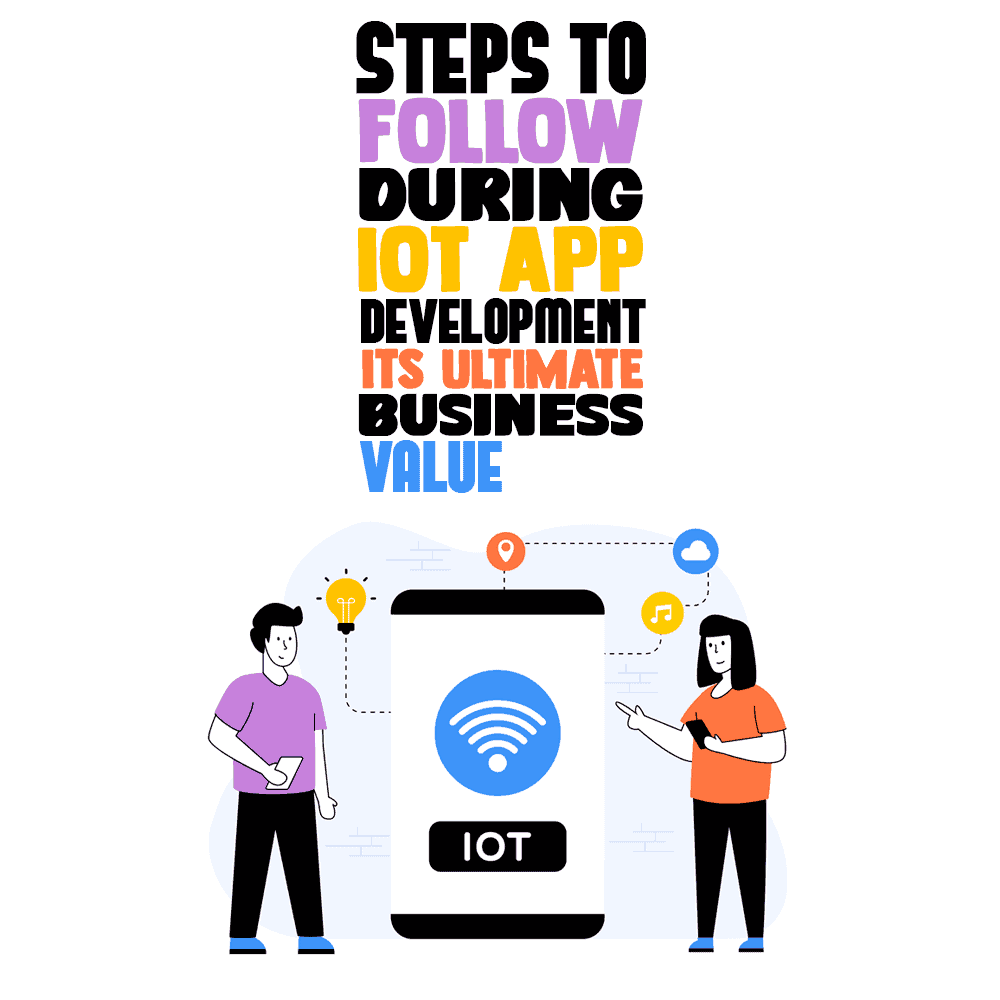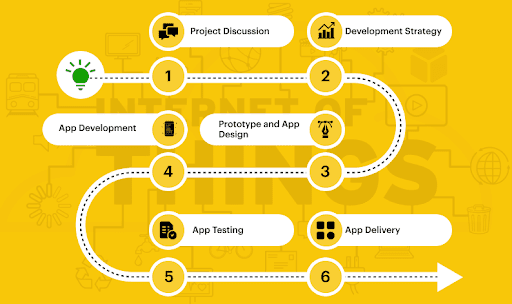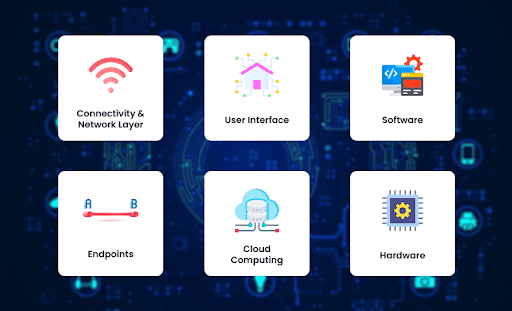
IoT, also known as the Internet of Things, is a form of technology that offers devices the capability to create a global communication network by seamless data exchange via the internet.
Therefore, customers can access data remotely, manage smart devices seamlessly, and so on.
This is why businesses channel using the technology in their app development strategy to function smartly and efficiently.
This is what we are going to cover in the article here. After reading it, you will know how to develop an IoT app.
Reasons Why IoT is Popular
Simplifies Decision Making
With the device possessing a wide array of sensors, acquiring data from multiple sources gets streamlined. Therefore, it becomes easy to act on those data seamlessly.
For instance, smartphones keep a smart tap on the user behaviour. Based on the behaviour, they provide suggestions to the companies so that new features get included, and user retention is maximum on the device.
Due to the constant influx of data, it becomes easy for businesses to gain insight into the latest trends in device usage and gain an idea of their multiple strengths and weaknesses. This is a possible courtesy of the presence of embedded sensors and processors that make it easy to perform data analysis. Hence, in a nutshell, it ensures that decision making gets streamlined for the business.
Automates Daily Tasks
IoT allows to automate daily tasks and ensures that workload is not much. Smart fridges, for example, help users know beforehand if the food inside has passed or is about to pass its expiration date and they need to order more.
Allows to Maintain Control Over Different Operation Areas
One of the prime advantages related to the interconnection of smart devices is ensuring automated control over different areas of operation. This contains areas like inventory management, shipping, tracking, etc.
With multiple sensors in the device, it becomes easy to perform all these different tasks with utmost ease and convenience.
Ensures Operational Safety
The presence of IoT devices like surveillance cameras and motion sensors allows for ensuring the utmost security of an enterprise.
It ascertains that mishaps such as thefts, and corporate espionage do not happen, thereby making its way into the good books of investors and business partners.
Using smart interconnected devices offers the following advantages.
- Ensures better staff productivity
- Allows better resource and asset usage
- Helps in achieving better business opportunities
- Creates a trustworthy image of the brand
With knowledge of these different benefits associated with IoT, let us now gain insight into the architecture and the buildup of this technology that allows achieving these advantages with utmost ease and convenience.
IoT App Development – Components and Tech Stacks Used
In the image above, you can observe there are six main aspects that are particularly used for IoT app development. These include connectivity and network layer, user interface, software, endpoints, cloud computing and hardware. We explain each of these in detail below.
Components Used during IoT App Development
- Internet access to transmit information to the cloud database.
- UI for seamless communication between the user and the computer system.
- Software like framework, embedded systems, partner systems, and middleware are necessary as they help in tasks like data gathering, device integration, etc.
- Endpoints allow for extending computing power so that acting on the information received from the internet is straightforward.
- Cloud computing simplifies the way huge packets produced by IoT get sent across the internet.
- Hardware to control different processes and features like system activation, authentication, communication, etc.
Knowing the different components, let's understand the tech stacks used.
- Programming languages like Java for seamless data transfer to the conventional databases
- Cloud platforms to protect the business against possible losses which may take place due to service outage
- Sensors do not require a direct internet connection. Hence, it becomes easy to transmit data without even the presence of an active internet connection.
- Frameworks help to seamlessly handle data chunks, design the app architecture, and write codes of a particular nature.
- Protocols help to extract information of crucial nature from the different data components.
With the idea of the different tech stacks and components involved in IoT app development, you must get knowledge on how to perform this task so that you can allow seamless data privacy, smooth communication, and so on.
How to Build an IoT App?

In the image above, you can check the different paths you have to cross when you have the goal of achieving successful IoT app development.
They include
- Project discussion
- Formulating an app development strategy
- Creating a prototype and app design
- Embarking on the journey of app development
- App Testing
- App Release
Continue reading to know each of these aspects in detail.
Project Discussion
Project discussion is extremely important as until and unless the development experts have thorough knowledge of the project, its success cannot be guaranteed. Therefore, a comprehensive conversation with the IoT project manager must take place to ascertain that the developers have knowledge of comprehending user interaction with different goods through the app built.
Formulating an App Development Strategy
The next crucial step is to have an app development strategy in place to ensure tasks like cross-platform interoperability and privacy protection are easy to achieve.
Collaborate with the project manager to create a robust plan with a timetable and project scope for the different hardware and software so that the end solution is high-quality. Also, it will ascertain the app allows data collection and processing to take place conveniently.
Creating a Prototype and App Design
Creating a prototype helps achieve two main aspects by analysing the different aspects of the product’s business case. Most importantly, it helps validate the product’s business case as well.
Therefore, you must place focus on creating an app prototype and on the app design to get a vision of how the end-product will appear.
Embarking on Journey of App Development
Connecting with a company having specialisation in the task is another main step you need to follow.
Channelling their aptitude in issue resolution using algorithms and data structures, programming, and error handling, they will give you access to a solution that provides you with long-term business benefits.
App Testing
The next important step is to test the app to assess the app’s performance on functional parameters, service compatibility, based on safety, based on connectivity, and so on to know if these areas are met by the final app and if it can get launched to the public in hindsight or not.
App Release
Once you identify safety, privacy, and have comprehensive clarity on the parameters like privacy getting met, you can have the app released.
Adhering to all these steps will ascertain the IoT app development journey for you remains unique and help you achieve industry growth and success side-by-side.
It is equally recommended that you keep these tips in mind to maintain data privacy and keep interconnection between devices seamlessly when you use this technology within your app development journey.
Tips to Ascertain Successful IoT App Development
Embarking on the journey for successful IoT app development? This demands you first to know the architecture. It helps you build a robust IoT app. Plan strategically and remember these tips. These together will give you the support to develop an app that successfully protects user data, automates operations, and enhances how customer service and retention take place.
- Create a roadmap—a well-defined project scope comprising deliverables and timelines for the project to move systematically.
- Select a platform that allows you to get maximum ROI and helps you get an estimate of your performance seamlessly.
- Assess different security concerns by using the right set of firewalls, and anti-malware products making sure they are updated.
- Check if speed and scalability are achieved through the end-solution so that tasks like data streaming become easy to perform and also it becomes easy to match up to increased data volumes.
Concluding Words
With these tips, you can go ahead and embark on the journey of IoT app development for your business. Following the right set of steps along this path will allow you to conveniently collect real-time data and attain maximum business advantages in the shortest time possible.

